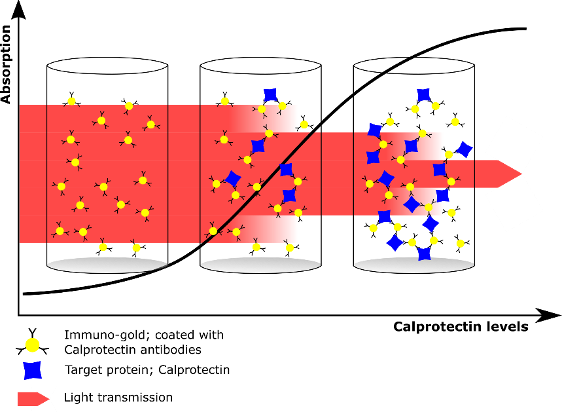- Other Products
- CCP
Turbidimetric assays are sensitive assays to determine concentration of antigens in a solution. Normally used in clinical laboratories, the assay principle is on the formation of antigen-antibody complexes that scatters light on its path, and the decreased transmission of light is correlated to the increased antigen concentrations.
Turbidimetric assays are quite common in hospital labs and labs providing clinical services. This assay format is somewhat like the ELISA method; however, instead of coating the wells with the capturing antibodies, they are attached to small particles (latex, gold etc). This allows for the antibodies and antigen to bind quicker, hence reducing the assay time.
The assay is measured by looking at the level of transmission of visible light. As the concentration of the antigen increases in the solution, more and more antigen-antibody complexes will be formed, which in turn increases absorption of light.

In turbidimetric assay, particle bound antibodies are mixed with the sample in appropriate buffer.
This mixture is then analysed using a light source. Level of light transmitted reflects the amount of antigen in the solution.
If no antigens are present, the light is hardly absorbed. As antigen concentration increases, light transmission is correspondingly decreased.
The turbidity is a result of antigen-antibody complexes that are formed in the buffer.
Turbidimetric assay is a highly sensitive assay, allowing results in a fraction of a time compared to ELISA – normally 10-15 min for the first sample. Once the initial sample is done, the rest follow continuously. Number of tests a lab can analyse, is dependent upon the analyser available. Different brands and makes can process various numbers of tests within 1 hr, but it is not uncommon to process several hundred samples within that time frame.